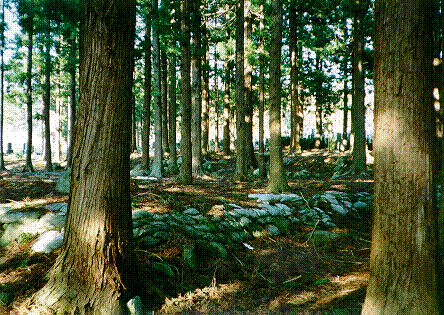

Enichiji, a Buddhist temple located at the foot of Mt. Bandai, was the religious center of the Aizu region throughout much of the Heian period (794-1185). Like other major temples in the Heian age, Enichiji was also a major political and economic force. According to temple tradition, Enichiji in its heyday controlled the entire Aizu region, holding lands that provided nearly 900,000 bushels of rice per year. Besides the main buildings, the temple complex contained some 3800 chapels. Enichiji was home to several thousand monks, many of them soldiers--in short, the temple supported a small army, as did many other Buddhist institutions in the Heian age.
Unfortunately, Enichiji's ancient buildings are no longer standing and there are no Heian period records of the temple, so these figures cannot be verified. A painting of Enichiji, showing a splendid complex of buildings, probably dates from the thirteenth or fourteenth century and thus reflects only a medieval memory of the temple. The painting's accuracy can be checked, however, against archaeological findings from excavations currently underway at the Enichiji site.
A computer model of the temple and a Virtual Reality walkthrough are provided here as our first attempt to imagine Enichiji's Golden Hall, the main temple building in which the most important Buddha image was enshrined.
At the time that we constructed the model, archaeologists had uncovered evidence of a building five bays wide in the east-west direction, which they took to be the Heian-period Golden Hall. Subsequent excavations discovered a seven-bay building on a lower level. This was probably the Heian-period building, and our model is probably of a building constructed later, perhaps in medieval times.The town of Bandai is currently reconstructing the Golden Hall at its original site. For details, see the Enichiji reconstruction web site .
 |
Return to menu page. |